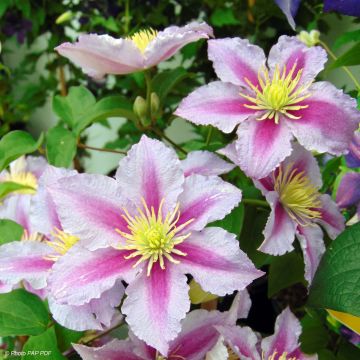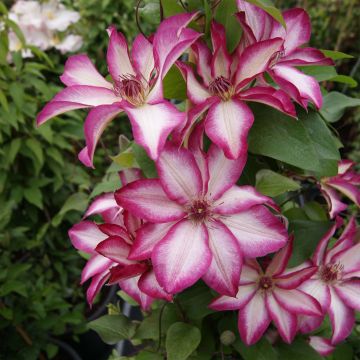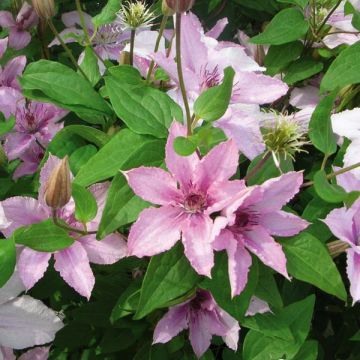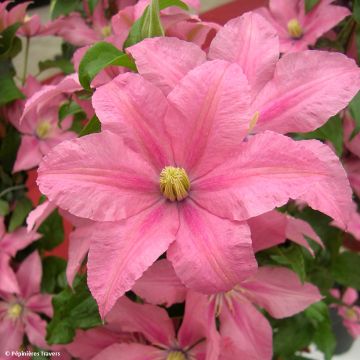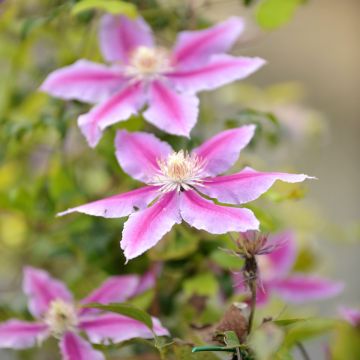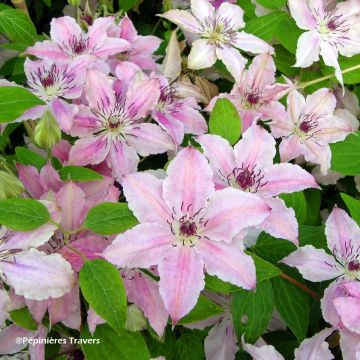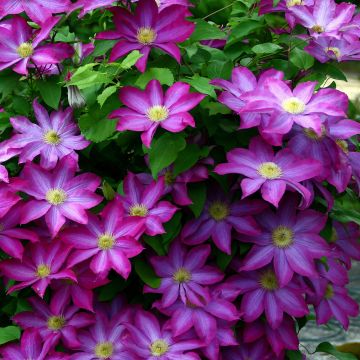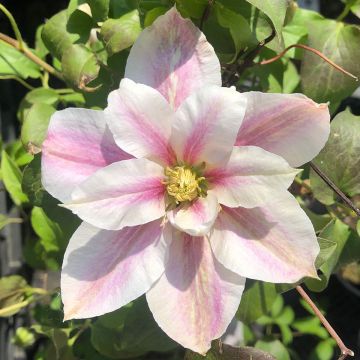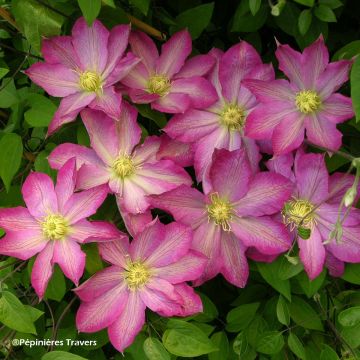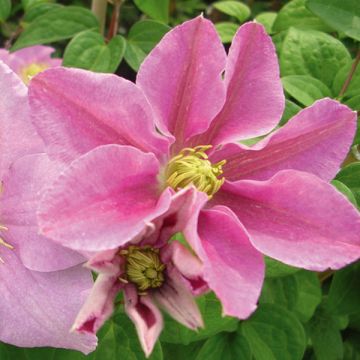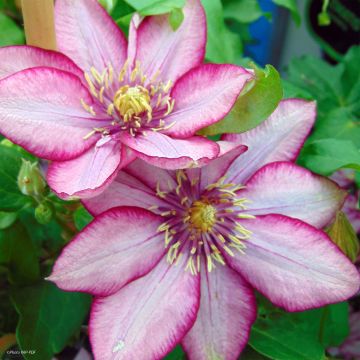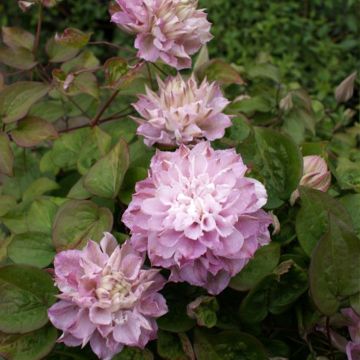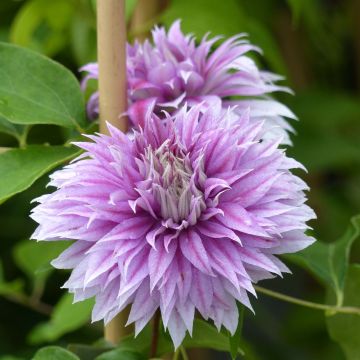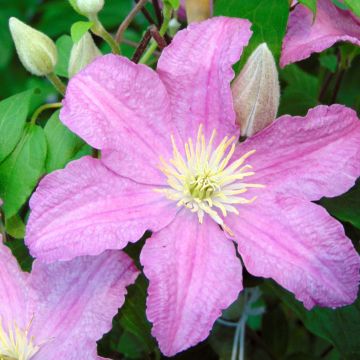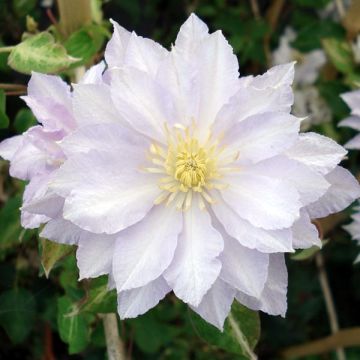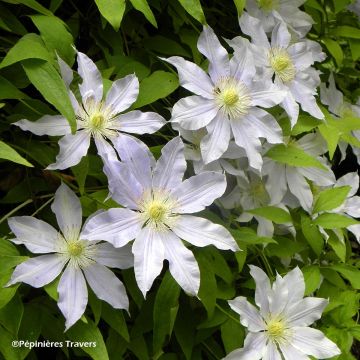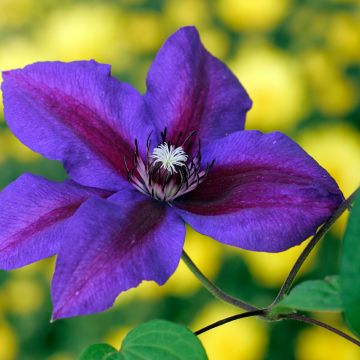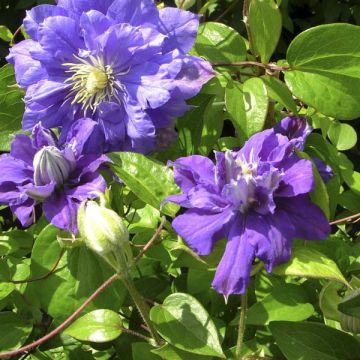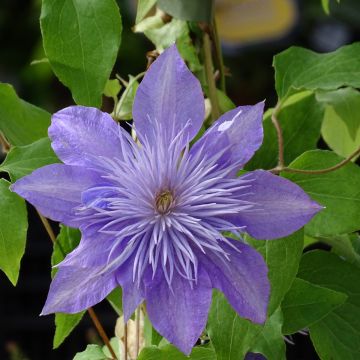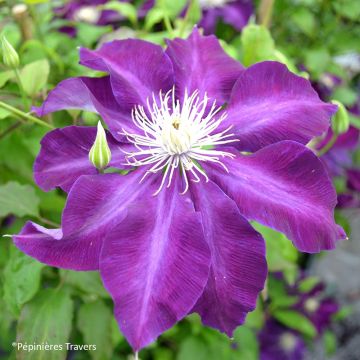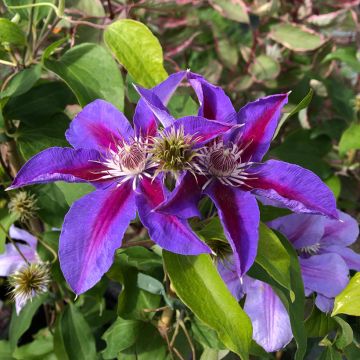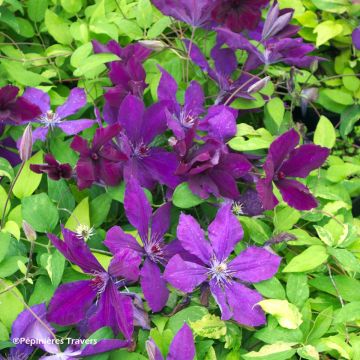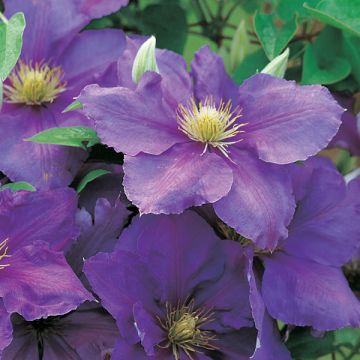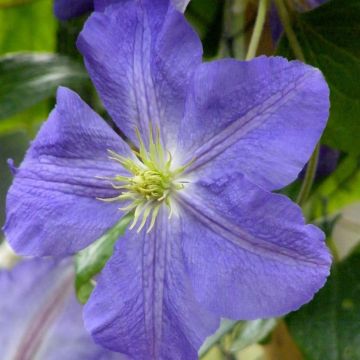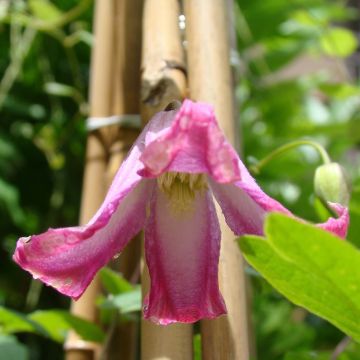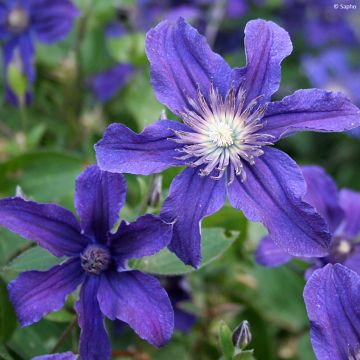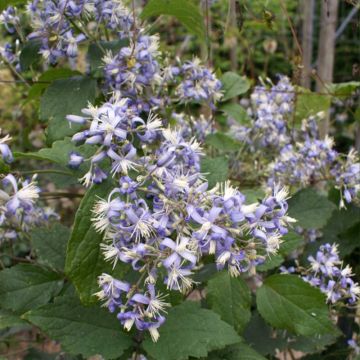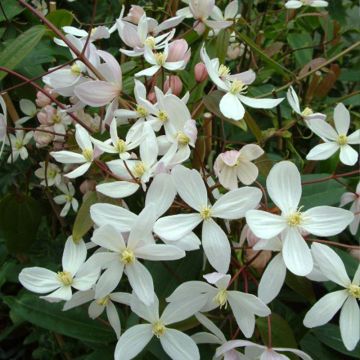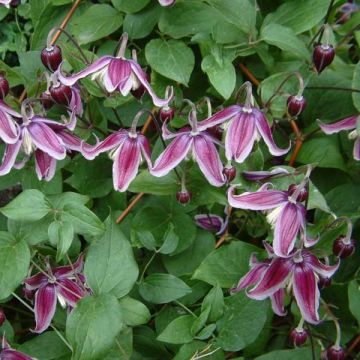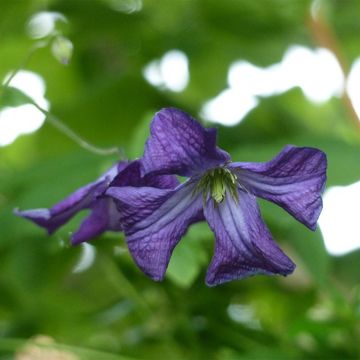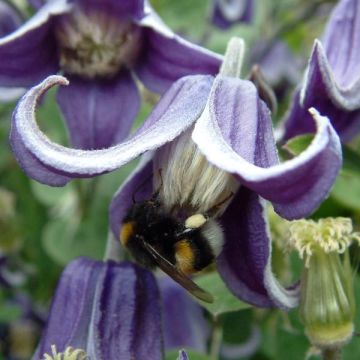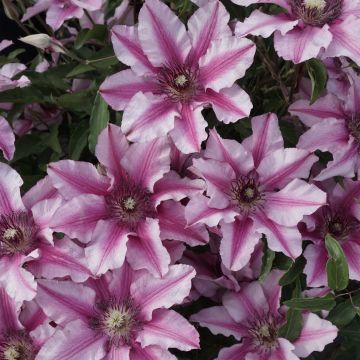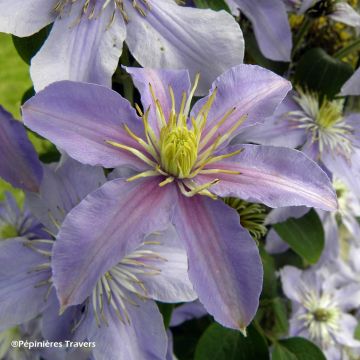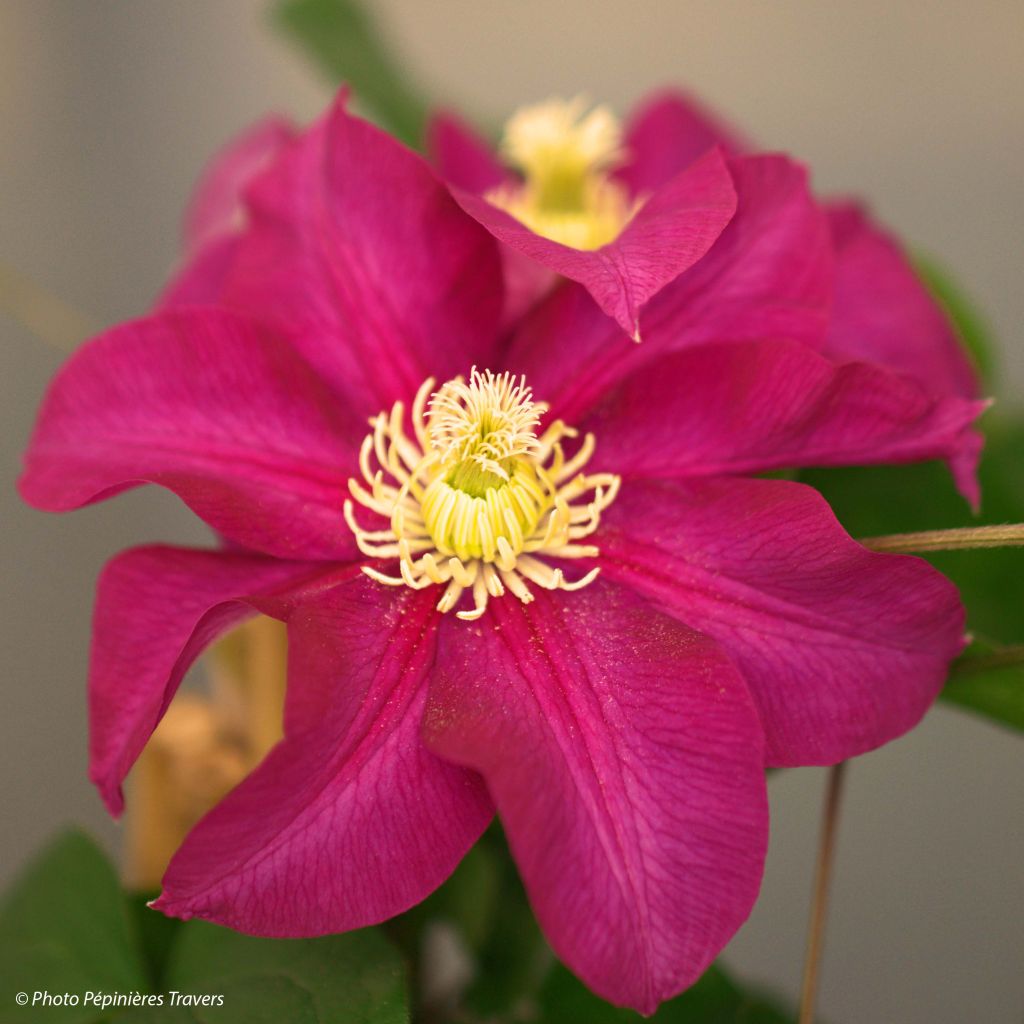

Clematis Success Magenta
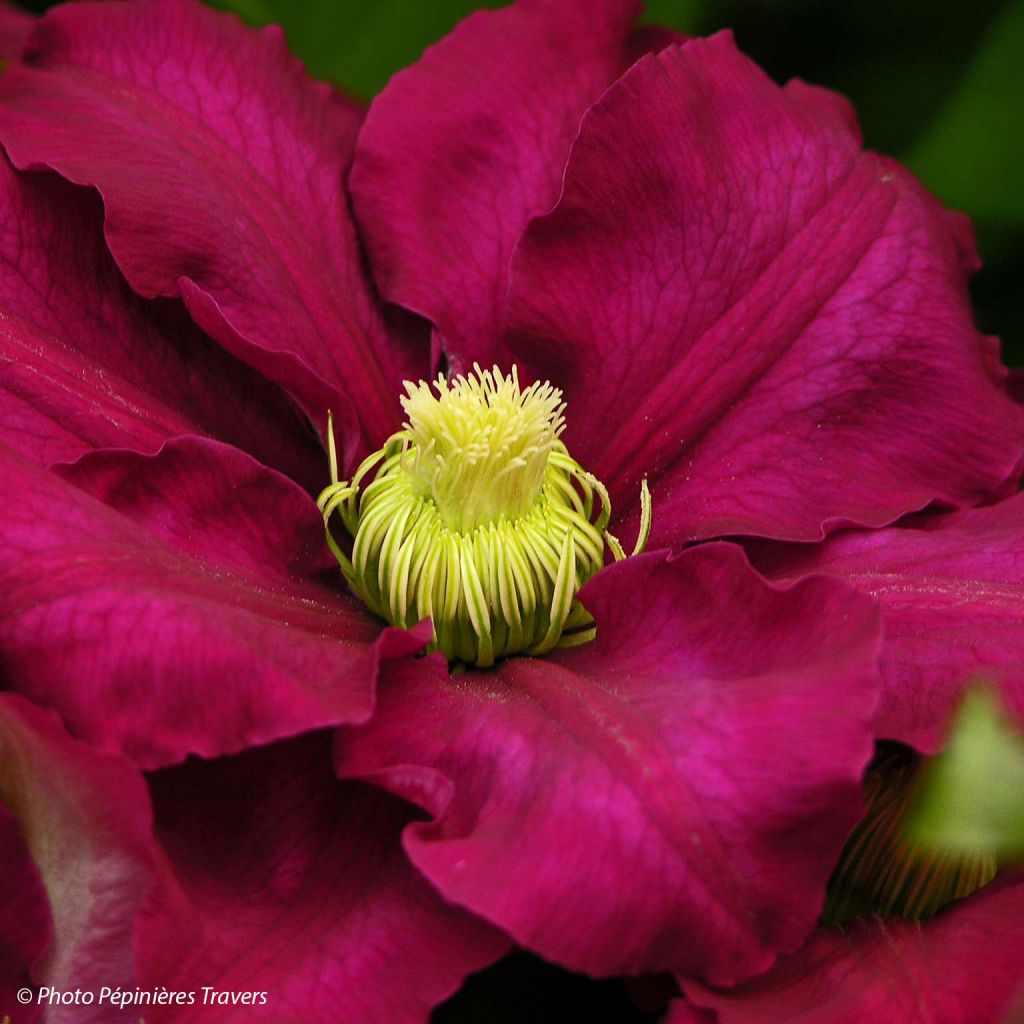

Clematis Success Magenta
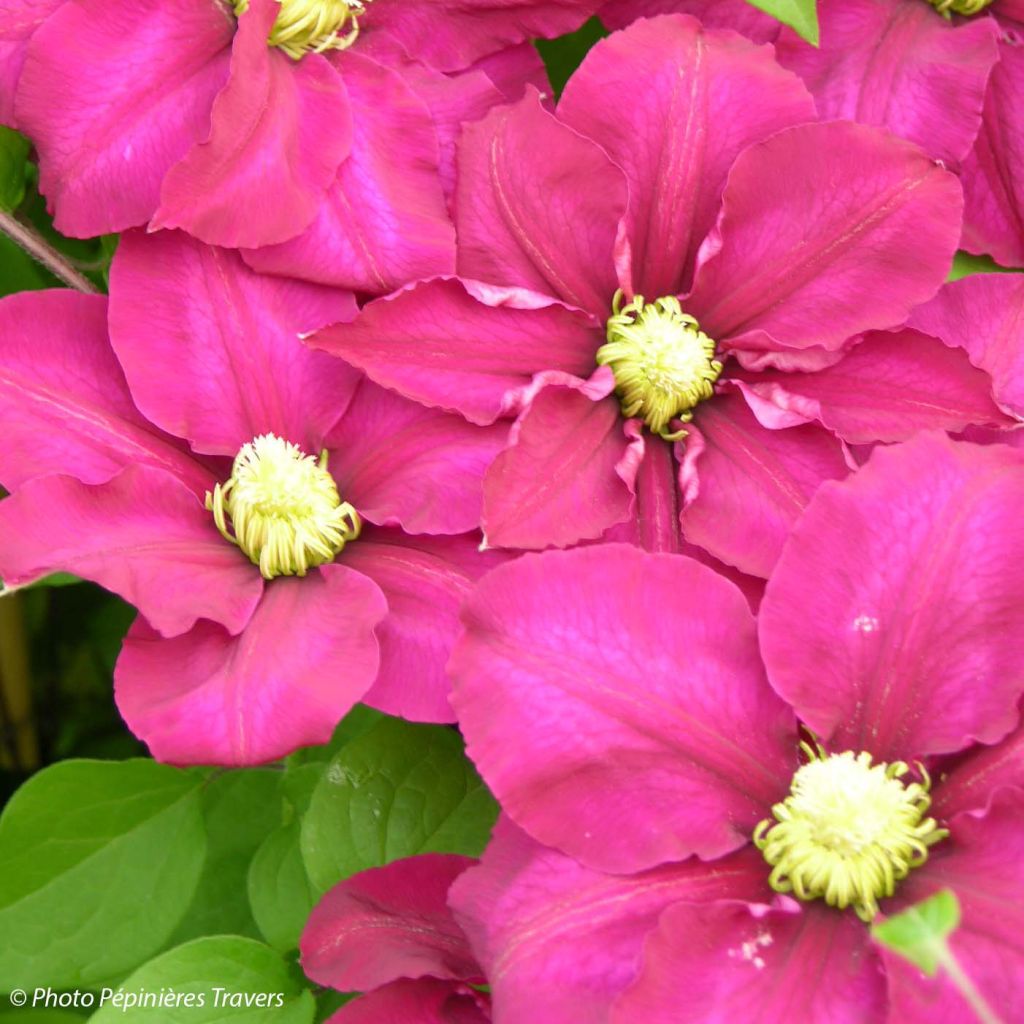

Clematis Success Magenta
Clematis Success Magenta
Clematis SUCCESS Magenta 'Tra73'
Old Man's Beard, Traveler's Joy, Virgin's Bower, Leather Flower
I am very disappointed by the poor quality of the plant. There are very few shoot stems, the main stem is damaged, and this will not ensure a satisfactory recovery. Unsatisfactory value for money.
Véronique, 09/05/2020
Why not try an alternative variety in stock?
View all →This plant carries a 6 months recovery warranty
More information
We guarantee the quality of our plants for a full growing cycle, and will replace at our expense any plant that fails to recover under normal climatic and planting conditions.
From €5.90 for pickup delivery and €6.90 for home delivery
Express home delivery from €8.90.
Does this plant fit my garden?
Set up your Plantfit profile →
Description
Clematis Success Magenta is a new variety of clematis with large flowers obtained in France by Bernard Travers. This compact climber generously blooms from April to October almost continuously and throughout its height, with wide, vibrant deep pink-red flowers enhanced by a heart of lemon-yellow stamens fading into cream-yellow. In the ground or in a container, this elegant and original variety will dress up fences, small trees, arches, and trellises.
Clematis belong to the ranunculaceae family. They are found in both hemispheres, particularly in Europe, the Himalayas, China, Australia and North and Central America. 'Success Magenta' is a perennial and hardy, semi-woody climbing plant that will reach about 2m (7ft) high, with a minimum spread of 1m (3ft).
Clematis Success Magenta bears flowers with eight petals, measuring 10 to 15cm (4 to 6in) in diameter on the previous year's wood from April to June, and then in successive waves on the current year's shoots, from summer to autumn. The flowers are solitary or grouped in clusters and particularly abundant. They are upright and have solid-coloured petals, somewhere between bright red and magenta pink, surrounding a cluster of lemon-yellow stamens that form a large button in the centre of the corolla. The flowers are followed by decorative, feathery, silver-grey seed heads that persist until winter. The pinnate leaves with ovate leaflets are smooth and medium green. This clematis clings to its support or host plant through petioles transformed into tendrils.
Plant clematis alongside your climbing roses or vines to extend the flowering of your walls and pergolas until the end of summer. This is a diverse genus with varieties of all colours, shapes, and sizes. Take advantage of their easy cultivation to give your garden a romantic and bohemian touch. 'Success Magenta' loves to weave through bushes and performs very well in a large pot.
Tips: Avoid excessive fertiliser application that can stimulate foliage at the expense of flowers. Do not mulch, to avoid excessive moisture that promotes clematis wilt.
Report an error about the product description
Clematis Success Magenta in pictures
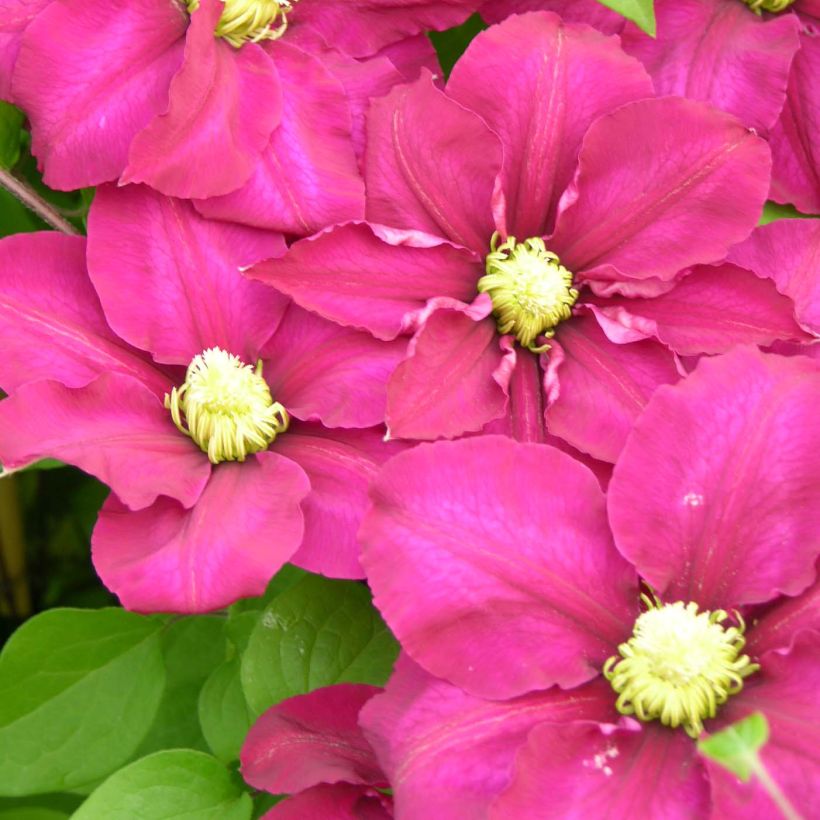

Plant habit
Flowering
Foliage
Botanical data
Clematis
SUCCESS Magenta 'Tra73'
Ranunculaceae
Old Man's Beard, Traveler's Joy, Virgin's Bower, Leather Flower
Cultivar or hybrid
Other Clematis Patens
Planting and care
Clematis Sucess Magenta likes a sunny or lightly shaded position near a tree. Plant it in fertile, humus-rich, well-drained soil, shading the roots and the base of the stem (with a flat tile, for example). Clematis can be prone to wilt in overly moist soil, but varieties derived from C.viticella seem to be less susceptible to this disease. Plant it by covering the root ball with 3 cm (1in) of soil, in soil worked to a depth of 20 cm (8in), lightened with good compost and coarse sand. After planting, cut back the stems to about 30 cm (12in) from the base above a healthy pair of buds. Water regularly during the first few weeks, but be careful not to let the water stagnate as this can cause a fungus to develop at the neck. Mulch all clematis in February with garden compost or well-rotted manure, avoiding direct contact with the stems. Train the stems, without crushing them, until the plant grips for itself. Clematis also like to grow freely on neighbouring plants. Prune in March to 30 cm (12in) from the ground.
After a few years, cover the base of your climbing clematis with a small mound of soil, to reduce the risk of clematis wilt while promoting the growth of vigorous new shoots from the crown. Voles and caterpillars can attack clematis and devour the stems. Aphids and greenhouse whiteflies are also potential pests.
Planting period
Intended location
Care
-
, onOrder confirmed
Reply from on Promesse de fleurs
Clematis
Haven't found what you were looking for?
Hardiness is the lowest winter temperature a plant can endure without suffering serious damage or even dying. However, hardiness is affected by location (a sheltered area, such as a patio), protection (winter cover) and soil type (hardiness is improved by well-drained soil).

Photo Sharing Terms & Conditions
In order to encourage gardeners to interact and share their experiences, Promesse de fleurs offers various media enabling content to be uploaded onto its Site - in particular via the ‘Photo sharing’ module.
The User agrees to refrain from:
- Posting any content that is illegal, prejudicial, insulting, racist, inciteful to hatred, revisionist, contrary to public decency, that infringes on privacy or on the privacy rights of third parties, in particular the publicity rights of persons and goods, intellectual property rights, or the right to privacy.
- Submitting content on behalf of a third party;
- Impersonate the identity of a third party and/or publish any personal information about a third party;
In general, the User undertakes to refrain from any unethical behaviour.
All Content (in particular text, comments, files, images, photos, videos, creative works, etc.), which may be subject to property or intellectual property rights, image or other private rights, shall remain the property of the User, subject to the limited rights granted by the terms of the licence granted by Promesse de fleurs as stated below. Users are at liberty to publish or not to publish such Content on the Site, notably via the ‘Photo Sharing’ facility, and accept that this Content shall be made public and freely accessible, notably on the Internet.
Users further acknowledge, undertake to have ,and guarantee that they hold all necessary rights and permissions to publish such material on the Site, in particular with regard to the legislation in force pertaining to any privacy, property, intellectual property, image, or contractual rights, or rights of any other nature. By publishing such Content on the Site, Users acknowledge accepting full liability as publishers of the Content within the meaning of the law, and grant Promesse de fleurs, free of charge, an inclusive, worldwide licence for the said Content for the entire duration of its publication, including all reproduction, representation, up/downloading, displaying, performing, transmission, and storage rights.
Users also grant permission for their name to be linked to the Content and accept that this link may not always be made available.
By engaging in posting material, Users consent to their Content becoming automatically accessible on the Internet, in particular on other sites and/or blogs and/or web pages of the Promesse de fleurs site, including in particular social pages and the Promesse de fleurs catalogue.
Users may secure the removal of entrusted content free of charge by issuing a simple request via our contact form.
The flowering period indicated on our website applies to countries and regions located in USDA zone 8 (France, the United Kingdom, Ireland, the Netherlands, etc.)
It will vary according to where you live:
- In zones 9 to 10 (Italy, Spain, Greece, etc.), flowering will occur about 2 to 4 weeks earlier.
- In zones 6 to 7 (Germany, Poland, Slovenia, and lower mountainous regions), flowering will be delayed by 2 to 3 weeks.
- In zone 5 (Central Europe, Scandinavia), blooming will be delayed by 3 to 5 weeks.
In temperate climates, pruning of spring-flowering shrubs (forsythia, spireas, etc.) should be done just after flowering.
Pruning of summer-flowering shrubs (Indian Lilac, Perovskia, etc.) can be done in winter or spring.
In cold regions as well as with frost-sensitive plants, avoid pruning too early when severe frosts may still occur.
The planting period indicated on our website applies to countries and regions located in USDA zone 8 (France, United Kingdom, Ireland, Netherlands).
It will vary according to where you live:
- In Mediterranean zones (Marseille, Madrid, Milan, etc.), autumn and winter are the best planting periods.
- In continental zones (Strasbourg, Munich, Vienna, etc.), delay planting by 2 to 3 weeks in spring and bring it forward by 2 to 4 weeks in autumn.
- In mountainous regions (the Alps, Pyrenees, Carpathians, etc.), it is best to plant in late spring (May-June) or late summer (August-September).
The harvesting period indicated on our website applies to countries and regions in USDA zone 8 (France, England, Ireland, the Netherlands).
In colder areas (Scandinavia, Poland, Austria...) fruit and vegetable harvests are likely to be delayed by 3-4 weeks.
In warmer areas (Italy, Spain, Greece, etc.), harvesting will probably take place earlier, depending on weather conditions.
The sowing periods indicated on our website apply to countries and regions within USDA Zone 8 (France, UK, Ireland, Netherlands).
In colder areas (Scandinavia, Poland, Austria...), delay any outdoor sowing by 3-4 weeks, or sow under glass.
In warmer climes (Italy, Spain, Greece, etc.), bring outdoor sowing forward by a few weeks.

































